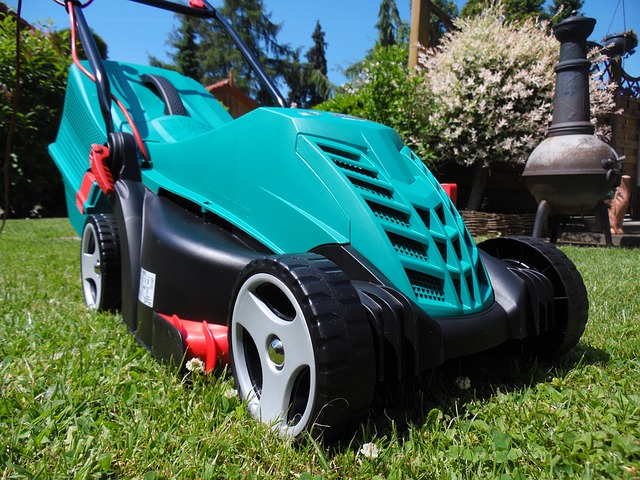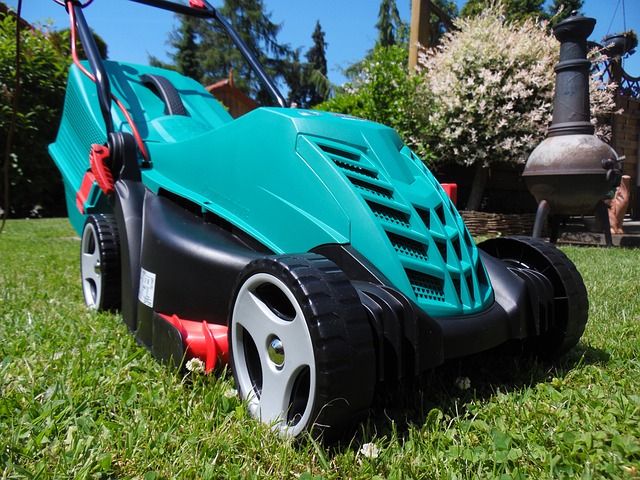Understanding your lawn's unique water needs is crucial for efficient Lawn Care and Landscaping. Different grass types require varying moisture levels, influenced by climate and soil composition. The right irrigation system—sprinkler, drip, or micro-sprinkler—is chosen based on property layout and needs. Modern controllers with smart technology offer convenience and improved system performance. Installation involves strategic sprinkler layout, pipe placement, and securing valves, followed by testing and regular maintenance like filter cleaning for optimal results.
Irrigation system installation is a crucial step in achieving a lush, healthy lawn. Understanding your lawn’s unique water needs forms the foundation for effective irrigation. This guide delves into choosing the right system—exploring various types and essential components—and provides a comprehensive, step-by-step installation process. From sprinkler systems to drip irrigation, learn how to set up efficient lawn watering for optimal lawn care and landscaping.
- Understanding Your Lawn's Water Needs: A Foundation for Effective Irrigation
- Choosing the Right Irrigation System: Types and Components to Consider
- Installation Process: Step-by-Step Guide to Efficient Lawn Irrigation
Understanding Your Lawn's Water Needs: A Foundation for Effective Irrigation

Understanding your lawn’s water needs is a fundamental step in effective irrigation system installation, an essential aspect of lawn care and landscaping. Every lawn is unique, with varying requirements based on factors like grass type, climate, and soil composition. Different grasses thrive under distinct moisture levels, so identifying these specific needs is crucial. This knowledge ensures that your irrigation system delivers the right amount of water, promoting a lush, healthy lawn without wasting valuable resources.
Proper assessment involves observing your lawn’s response to existing watering routines and understanding its natural cycle. Expert landscapers can help identify signs of over- or under-watering, such as wilting, uneven growth, or dry patches. By analyzing these cues, you can tailor your irrigation system to match your lawn’s precise water requirements, contributing to its overall health and beauty while maintaining sustainability in lawn care practices.
Choosing the Right Irrigation System: Types and Components to Consider

When it comes to choosing the right irrigation system for your lawn care and landscaping needs, several factors come into play. The first step is determining the type of system that best suits your property’s layout and requirements. There are three primary types: sprinkler systems, drip systems, and micro-sprinklers. Each offers unique advantages; for instance, sprinkler systems are ideal for large areas as they provide efficient coverage while saving water through precise distribution. Drip systems, on the other hand, are perfect for smaller, more intricate yards, allowing for targeted watering directly to plant roots.
Understanding the components of these systems is equally vital. Key elements include controllers (which regulate timing and scheduling), pipes (to distribute water), emitters or nozzles (for actual water dispersal), and filters (to maintain water quality). Modern controllers often incorporate smart technology, enabling remote monitoring and adjustments via smartphone apps. Additionally, selecting high-quality components ensures durability and reduces the risk of leaks or clogs, contributing to a healthier lawn and saving you maintenance headaches in the long run.
Installation Process: Step-by-Step Guide to Efficient Lawn Irrigation

Installation Process: A Step-by-Step Guide to Efficient Lawn Irrigation
The installation of an irrigation system is a significant step in enhancing lawn care and landscaping efforts. It involves careful planning, selection of suitable equipment, and precise execution. The process begins with assessing your lawn’s water requirements based on factors like climate, soil type, and vegetation density. This evaluation ensures the system delivers the right amount of water efficiently. Next, determine the best irrigation method—drip, spray, or rotator—based on these needs. Each method has its advantages for specific grass types and landscapes.
Proceed by designing a layout that strategically places sprinklers or emitters across your lawn. Consider obstacles like trees and shrubs to avoid damage during installation. Digging trenches or laying pipes according to the designed route is crucial for proper water distribution. Ensure all components, including valves, filters, and controllers, are securely installed. Test the system thoroughly after setup to identify and rectify any leaks or misaligned sprinklers. Regular maintenance, such as cleaning filters and checking for clogs, will keep your irrigation system running optimally, contributing to lush, healthy grass and an aesthetically pleasing landscape.
Irrigation system installation is a strategic investment in your lawn’s health and longevity. By understanding your lawn’s water needs, selecting the right system, and following a meticulous installation process, you empower yourself to provide optimal care for your lawn and landscaping. Incorporating efficient irrigation practices not only ensures a lush, vibrant yard but also contributes to sustainable water usage, making it a crucial aspect of modern lawn care and landscaping.
